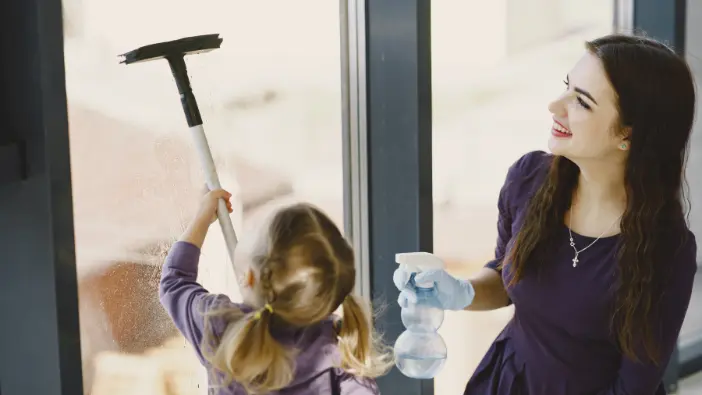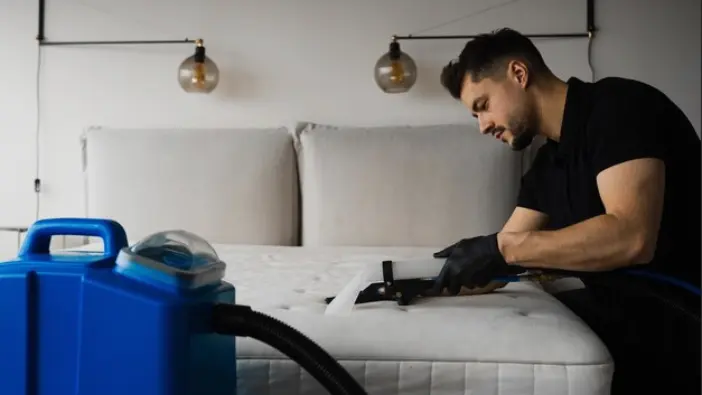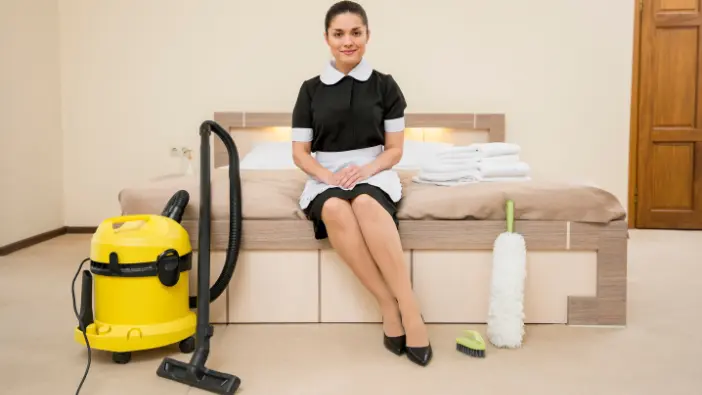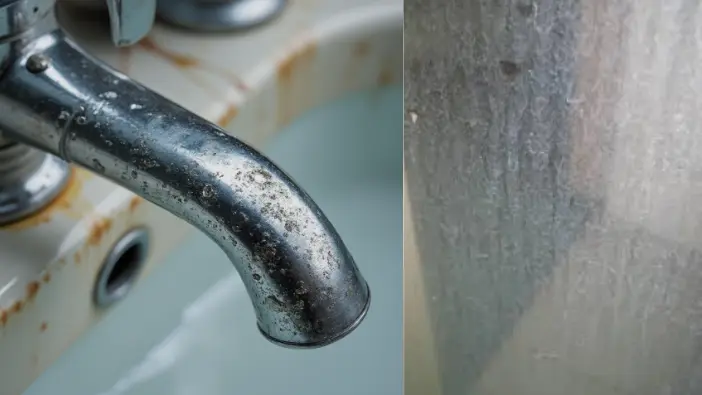Basements are usually more challenging to clean as they are often damper and less ventilated than other areas of the house. However, if you avoid using chemicals, steam cleaning can be a very effective way to clean basement floors. This guide will cover steam-cleaning advantages, what basement floors are suitable for steam cleaning, dry instructional steps, issues that can be resolved, and more.
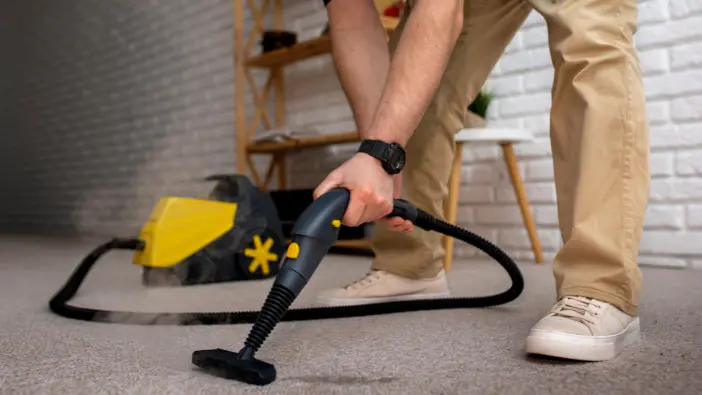
Why Choose Steam Cleaning for Your Basement Floors?
Cleaning the basement floor with steam is very safe. It improves the quality of your cleaning by removing dirt and stubborn stains using steam and hot water instead of chemicals. Since this method also kills germs on your floors, it’s appropriate for damp or humid areas such as basements.
Advantages of Steam Cleaning for Basement Floors
Using steam has many advantages over alternate methods, such as mixing to create a solution. Water is utilized in this process. The steam itself can be used to clean off dirt, bacteria, and viruses. The best part is that it leaves harmful deposits behind. Apart from that, through this method, any caked-in substances are wiped off the floor surfaces, and they look completely new.
Reasons Why Steam Cleaning is Best for Your Basement
Basements are by far the most difficult areas to maintain, primarily because mold and mildew are highly likely to develop. However, steam cleaners can make this task less burdensome by eliminating grime and bacteria in dark corners. Since steam is heated, it can also very effectively clean grungy places with mud.
Steam Cleaning vs Traditional Cleaning Methods
With the dust and dirt gone, matters related to germs are perfect, but what irritates patients is the strong smell of chemicals used for traditional cleaning along with the scrubbing, which proves to be arduous for both the floor as well as one’s breathing. Steam cleaning is natural, effective, and efficient in cleaning and sanitizing using just water vapor. Commercial cleaning, which involves professional cleaning services, ensures thorough cleanliness and hygiene for large spaces, free from harsh chemicals.
Steam Cleaning Improves Indoor Air Quality in Basements
One great benefit of steam cleaning is that it sanitizes an area by getting rid of allergens like dust and mold spores. Since steam is infused with warmth, the addition of steam enhances purification while posing no risk of developing bacteria. This is especially useful for basements, which tend to be damp. Thus, think of steam cleaning your basement floors as a means to have cleaner air and a hygienic setting.
Types of Basement Floors Suitable for Steam Cleaning
Different types of ceiling materials are used for basement construction. Although these might not be the same for all basements, as they differ in building strategies and the materials available in each region, some people believe that particular basement floors are better suited to steam cleaning.
- Concrete Floors: Durable and moisture-resistant. Steam cleaning helps remove stains and disinfects by killing germs and bacteria.
- Wooden Floors: Requires cautious use of steam to avoid moisture damage. Too much steam can lead to rot or cracking.
- Tile and Grout Floors: Steam is effective for removing dirt, mold, and mildew. It penetrates grout lines and loosens stubborn stains.
- Vinyl Floors: Steam cleaning is generally safe, but excess steam may cause peeling or lifting. Always check manufacturer guidelines before cleaning.
How to Steam Clean Your Basement Floors
The fourth part relates to the steam cleaning process. Now that you have understood the advantages and the kinds of floors that can be steam cleaned follow the step-by-step process of steam cleaning basement floors.
Step-by-Step Guide to Steam Cleaning Basement Floors
- Prepare the Room: Put away any furniture, area rugs, and other items on the floor.
- Vacuum: Ensure that the floor is not dusty or dirty before starting to steam clean it.
- Load the Steam Cleaner: Check the instruction manual to fill up the steam cleaner appropriately.
- Turn on the Cleaner: Start by turning on the steam cleaner; this usually takes a couple of minutes before it’s ready.
- Conduct Steam Cleaning: With your cleaner steadily moving across the floor, pay special attention to stains or areas that receive more foot traffic.
- Wait until the Floor is Completely Dry: After steam cleaning, ensure that the floor has dried out entirely before making any foot contact.
Best Steam Cleaners for Basement Floors
Basements have harsh conditions, and not all steam cleaners will do the job. Seek a steam cleaner that suits your needs, particularly heavy-duty cleaners with a broad, flat surface working area. Some of the best options for basements include steam mops and canister steam cleaners, which possess multiple attachments for different flat surfaces.
How to Prepare Your Basement for Steam Cleaning
Here are some quite helpful tips to follow before you start with the steam cleaning:
- Get Rid of Items: Move all furniture, rugs, and other equipment out of the basement.
- Absorb Excess Water: The basement must be dried, especially if a steam cleaner is needed.
- Air the Room: To aid airflow while cleaning, windows can be opened, or fans can be used.
Safety Tips for Steam Cleaning Basement Floors
It is claimed that steam cleaning works best but requires proper care to avoid accidents:
- Do Not Let the Steam Touch Your Skin: It is best to stay at the edge while using the steam nozzle to avoid burns.
- Turn the Cleaning Machine on Some Portions First: Before you use the steam cleaning machine on the entire floor, it is best to start small to see if any damages occur.
- Use More Open Air: A well-ventilated basement is ideal for steam cleaning.
Steam Cleaning Basement Floors Can Resolve Many Issues
Some of the issues that steam cleaning can address include stains and decaying wood.
Removing Stains from Basement Floors with Steam Cleaning
Basements tend to get stained because of dirt accumulation, spillages, and foot traffic. Steam cleaning makes the removal of these stains much easier, as it releases dirt and grime particles embedded within the floor layer. It is most helpful in cleaning stains on concrete and tile surfaces, which are generally difficult to do.
Steam cleaning mold and mildew on floors of the basement
Steam treatment is the best method for removing mold and mildew from basement floors. The steam’s high temperature makes it impossible for the spores to survive and thus kills them. This, in turn, helps keep your basement clean from mold.
Removing Odor from Basement Floors Through Steam Cleansing
If a basement’s smell is unpleasant, steam cleaning will come in handy. Since there are spores, the basement is most likely to smell moldy, musty, or even damp; however, the treatment neutralizes the odor that is emitting.
How to Avoid Damaging the Floors while Steam Cleaning
When performed with the proper parameters, steam cleaning can be harmless to floors; however, essential care must be taken to ensure this. First, check the floor type and try steam cleaning in an obscure area.
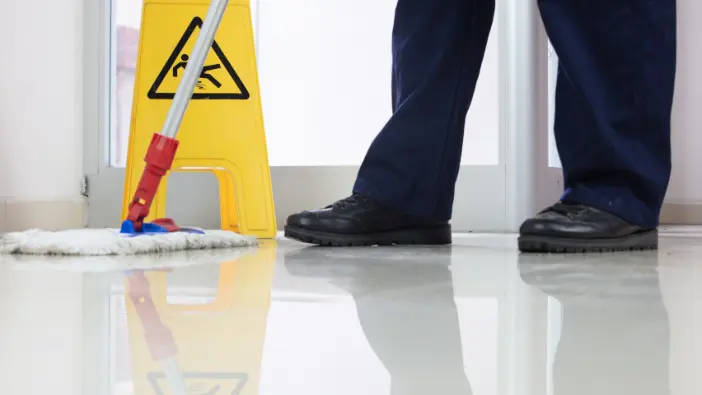
How to Maintain Your Steam-Cleaned Basement Floors
Steam cleaning is quite a complex task, so if you have recently steam cleaned your basement floors, then it is about time for you to understand the maintenance.
What to Do After Steam Cleaning Your Basement Floors
It is essential to clean your basement periodically after you have used a steam cleaner. If you have wooden flooring in the basement, this helps keep it clean and adds extra benefits.
Cleaning Tips for Long-Lasting Results
It is better not to apply Cetrimonium Chloride or other harmful enzymes to the floor when it is cleaned because these enzymes make the result less durable. This also means that maintenance and spot cleaning can only be done by steam cleaning.
Steam Cleaning Frequency for Basement Floors
The amount of foot traffic and moisture present in your basement determines the duration of steam cleaning. On average, you can go about 3-6 months without steam cleaning, which means that if too much moisture gets into the basement, it will cause risks.
Conclusion
Steam cleaning is an ideal solution for maintaining the cleanliness of your basement floors. This effective method can help keep the basement free of germs and dirt. Steam cleaning works on several floor coverings, including concrete and tile, and helps eliminate stains, mold, and bad smells. By ensuring the correct procedures and tools are used, you should be able to make your basement attractive and breathe clean air.

